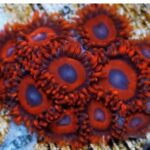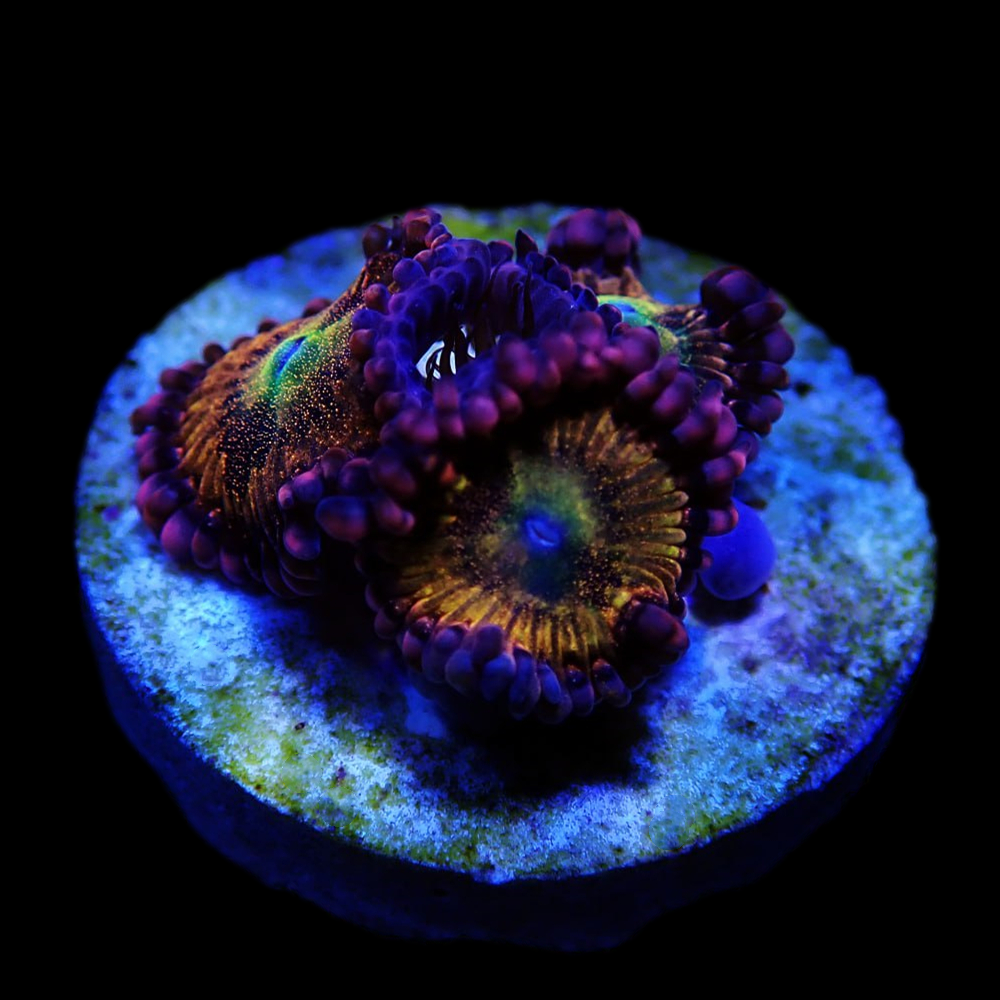- Description
Description
Kedd’s Red Zoanthid Coral
Kedd’s Red Zoanthids are easy to keep and are a great choice for the beginner. Zoanthids and Palythoa will grow and reproduce by budding.
Placement: Mount the Kedd’s Red Zoanthids using IC gel glue, or putty, on an exposed rock lower in the aquarium where they will receive direct flow and light. If you do not want them growing on your your main rock structure, try creating a Zoanthid island by mounting several types of Zoanthids and Palythoa to one larger rock and placing it as an island in your sand bed.
Feeding: Although symbiotic algae called zooxanthellae hosted within them supply most of their nutritional requirements through photosynthesis, Eagle Eye Zoanthids do benefit from supplemental feedings of Oyster-Feast, Roti-Feast, cyclopeeze, & sometimes small bits of mini mysis. Target feeding gets the corals fed using less food while keeping your nitrates and phosphates lower.
Lighting & Flow Requirements: Kedd’s Red Zoanthids require moderate water flow and low to moderate lighting (PAR 100-250) to maintain their color. T5’s, Metal Halides, or LED’s can all grow Zoanthids and Palyhtoa when the proper PAR levels are provided. We recommend a 14-20K color spectrum for best coloration.
Care level
- temperature: 25-27 °C
- food: zooplankton, light (Zooxanthellae)
- flow: low – medium
- light: low – medium (high blue content)
- Level; Easy
Expect 1 – 2 heads per frag.
** Photos is for reference of the species only, actual pcs will vary during shipment .
Water Chemistry: It is important that proper calcium (420-440 ppm), alkalinity (8-9.5 dkh – run it 7-8 if you are carbon dosing) , and magnesium levels (1260-1350 ppm) are maintained. Raising magnesium levels gradually up to 1400-1600 ppm can help to combat algae outbreaks, just keep CA and Alk in line as you raise the Mg.
Nitrates should be below 10 ppm and phosphates should be below .10 ppm. We recommend doing a water change when Nitrate levels rise to 10 ppm. It is important to replace your phosphate media when phosphates rise to .10 ppm. Media Reactors make the most efficient use of your phosphate media by fluidizing it.

















